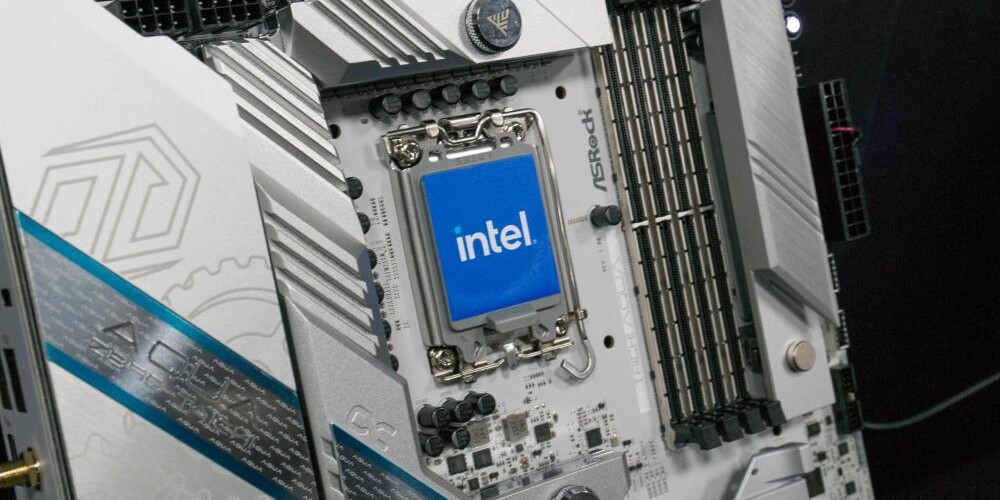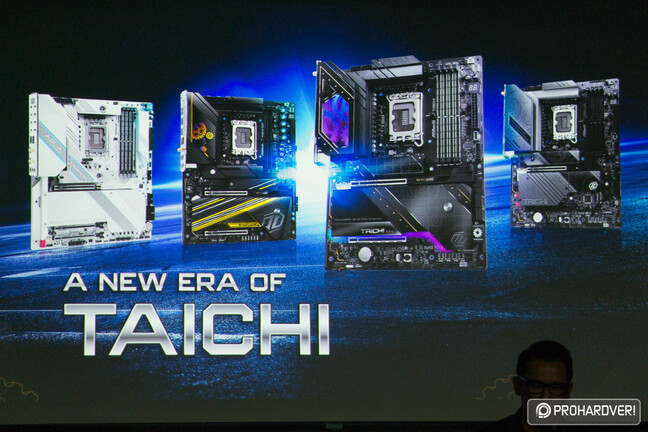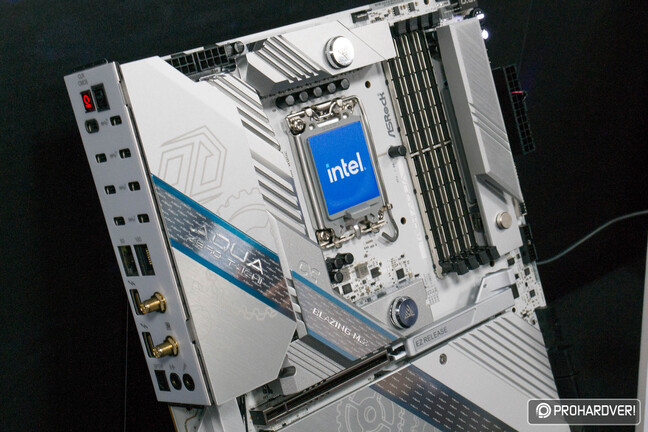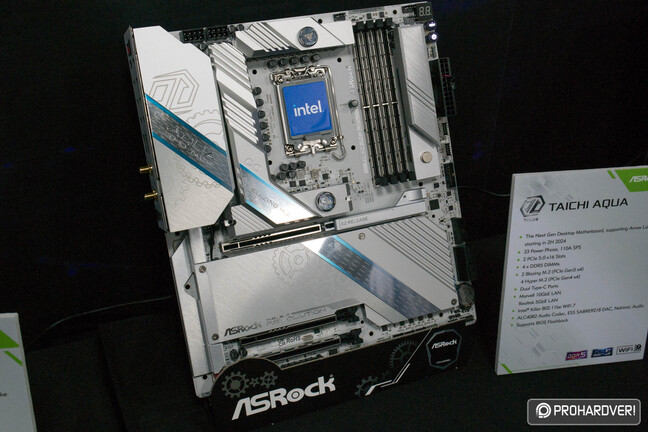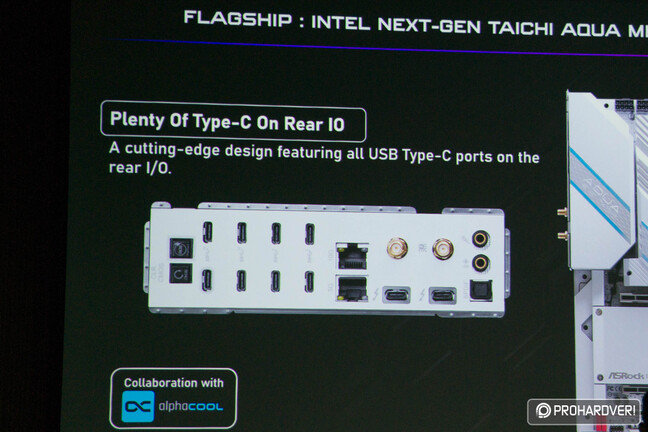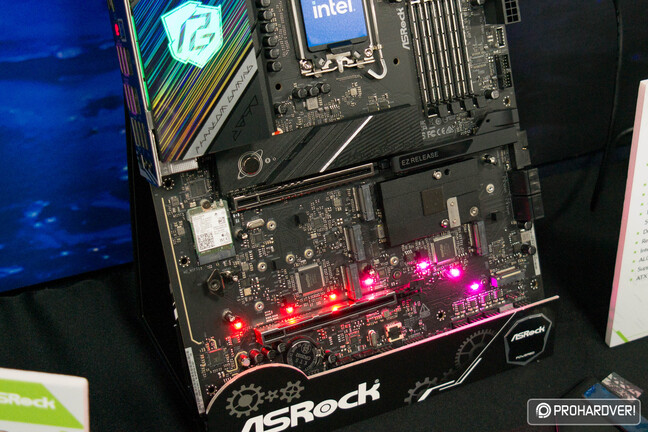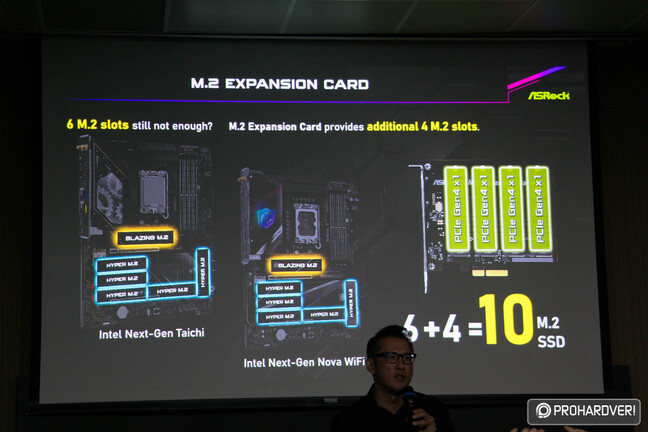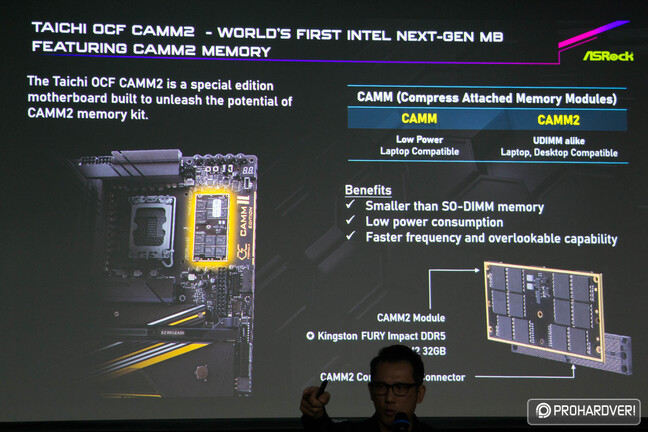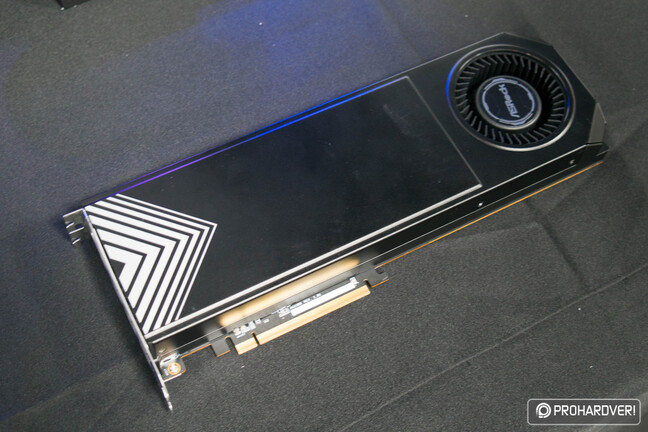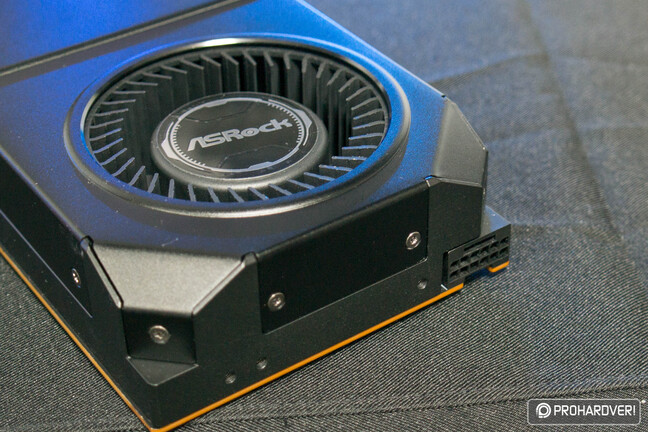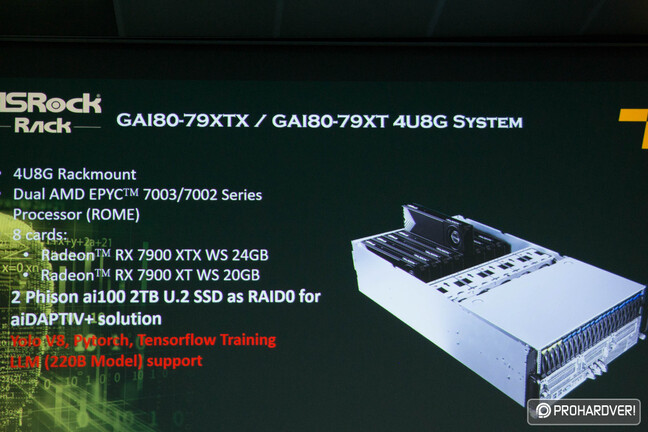While waiting for the Arrow Lake and Granite Ridge CPUs, ASRock also introduced several motherboards and an interesting VGA card.
We also visited ASRock, which introduced a variety of new products this year. Starting from the motherboards, the main place is the Taichi series, which is turning into a complete high-end series, which includes four members: Taichi AQUA, Taichi OCF, Taichi and Taichi Lite, at least on the Intel side, because in AMD at the moment Taichi and Taichi are mentioned Lite only, built on the X870E/X870 console bridge.
Regarding the latter, it has been highlighted that both USB4 interfaces should be routed to the rear on these motherboards.
Returning to the Intel division, the AQUA is a water-cooled beast with a 33-phase power supply system (28+1+2+1+1) and of course a unique water block that not only cools the VRM components, but also an M slot. 2 first (while walking around the exhibition, you can see that there is a huge demand for cooling PCI Express 5.0 SSDs).
The back of the sheet waiting for Intel Arrow Lake processors is also not everyday, there is a whole set of Type-C ports on it, and this is obviously at the expense of other connectors, because there is no Type-A at all, for example, so you have to pay attention to That's when you select keyboard/mouse.
An interesting development, if somewhat art for art's sake, is the solution we saw on the mid-range Nova Wi-Fi, which is also being prepared for Arrow Lake, as well as next-gen Taichi boards, namely the number of M.2 sockets grow . There are a total of six such slots in this build, and there is also a riser in the box, with four additional M.2 connectors, so that a customer who is fixated on storage space can install a total of ten M.2 SSDs in the machine.
It's a small joy, for example, that the expansion card in question is a PCIe x4 design, so the drives installed on it only get the x1 interface.
Finally, there's the Taichi OCF CAMM2 version, which has been sharpened for enchanting with clock signals, which is good enough to accept CAMM2 memories, and this is no coincidence, as CAMM2 modules can handle tuning much better.
[+]
Moving on to graphics cards, we saw a good solution in the case of the Radeon RX 7900 WS series that stands out in the picture.
This is a model based on the RX 7900
Another interesting feature of the VGA is that, unusually for Radeons, there is a 12VHPWR connector at the end, so their cables are much simpler, with only one wire coming out of them towards the back, so there is no need to make room for the VGA. above.








































